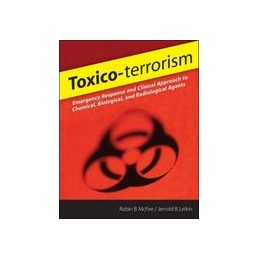- Obniżka


 Dostawa
Dostawa
Wybierz Paczkomat Inpost, Orlen Paczkę, DHL, DPD, Pocztę, email (dla ebooków). Kliknij po więcej
 Płatność
Płatność
Zapłać szybkim przelewem, kartą płatniczą lub za pobraniem. Kliknij po więcej szczegółów
 Zwroty
Zwroty
Jeżeli jesteś konsumentem możesz zwrócić towar w ciągu 14 dni*. Kliknij po więcej szczegółów
Publishers Note:: Products purchased from Third Party sellers are not guaranteed by the publisher for quality, authenticity, or access to any online entitlements included with the product.
The emergency medicine expertise you need to prepare for--and manage--any type of bioterrorist attack!
Written by emergency room physicians for emergency room physicians, Toxico-terrorism covers every essential aspect of the emergency medical response to microbial, radiological, and chemical agents of terrorism. Turn to any page, and youll find lifesaving clinical strategies for the management of patients who have been exposed to a biologic, chemical, or nuclear agent.
Features
Opis
